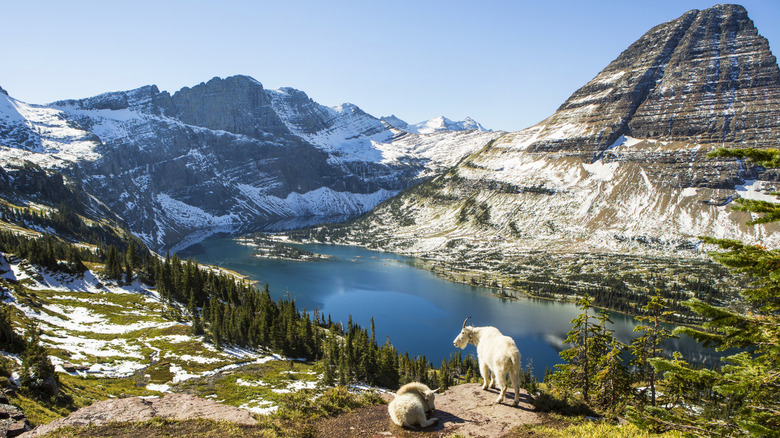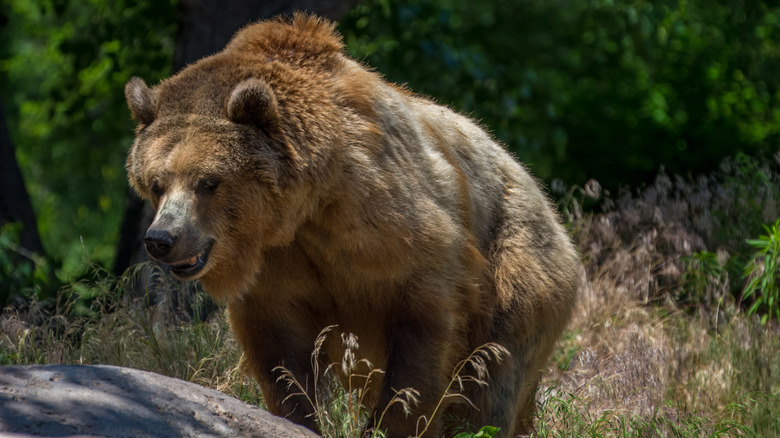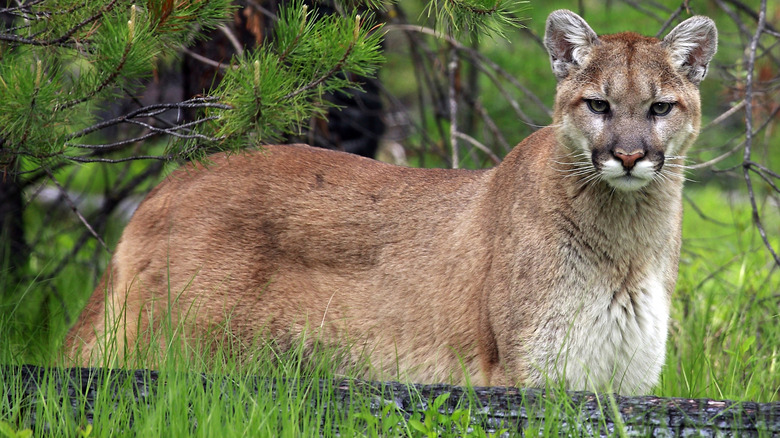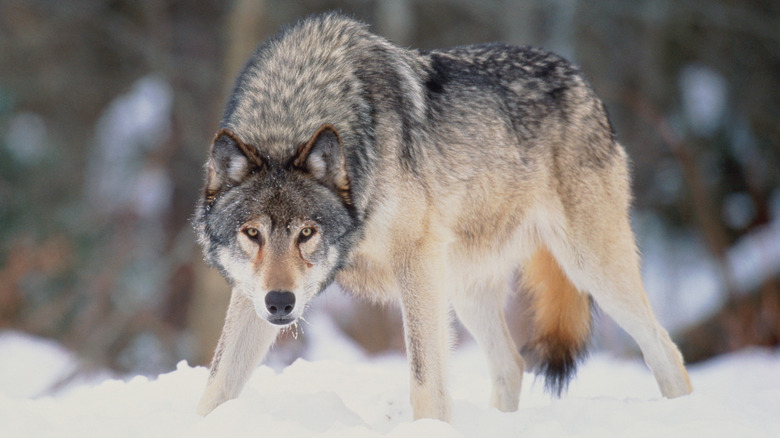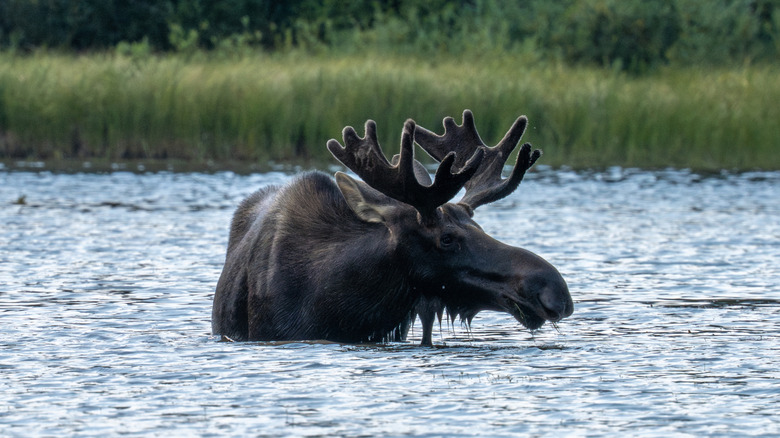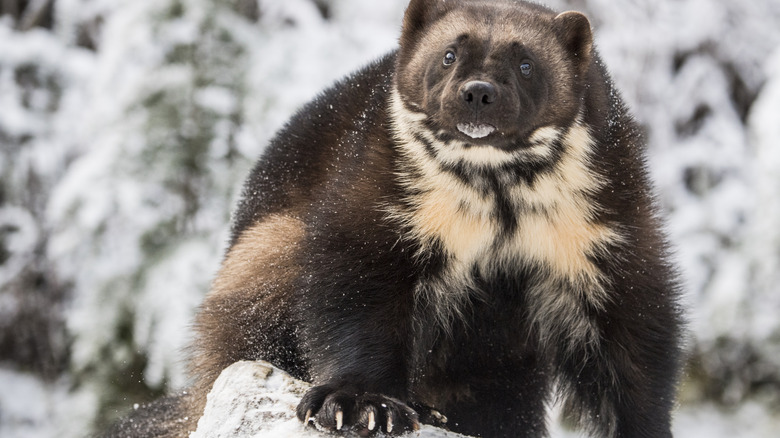5 Creatures To Beware Of When Adventuring In Glacier National Park
We may receive a commission on purchases made from links.
Montana's Glacier National Park is renowned for its namesake glaciers. However, this 1,583-square mile park, known as the Crown of the Continent, is also home to a vast array of wildlife. While visitors to the park may find it a bit more difficult than expected to get a glimpse of the park's 25 active glaciers, they are quite likely to encounter a number of its wildlife inhabitants.
While many of the hundreds of animal species found in Glacier National Park, including 71 different types of mammals, can be awe-inspiring, several are potentially dangerous as well. As a result, those adventuring throughout the million-plus-acres contained within the park, should exercise caution, be aware of their surroundings, and know how to properly respond if they come face-to-face with one of these creatures.
Although adventurers should always treat any wild animal as just that — a wild animal — some require a bit more caution than others. Regardless of danger level, visitors should always give these wild animals plenty of space, not attempt to feed or handle them, and don't do anything to startle or scare them. Taking these precautions will generally suffice to ensure a safe outdoor excursion. However, even then, animals such as bears, mountain lions, wolves, moose, and wolverines are creatures to beware of when adventuring in Glacier National Park.
Bears are common in Glacier National Park
Wherever they are found, bears are a safety concern for outdoor adventurers. This is undoubtedly so in Glacier National Park, as two types of dangerous bears –- grizzly and black bears -– are found here. In fact, there are so many bears in this expansive national park that, at times, some trails are closed due to high bear activity.
Given that bear attacks are on the rise nation-wide and because ample populations of these bears are found within the park, visitors should take a few precautions. For starters, proper bear safety protocol should be followed whenever hiking, camping, or adventuring in the park. Secondly, you should carry and know how to use bear spray, like the SABRE Frontiersman. Additionally, it is important to know how to tell the difference between grizzly and black bears, because your response to an aggressive encounter will differ depending on the type of bear.
Of course, the best way to stay safe in bear country is to avoid them altogether. One of the surest ways to do this is to make noise while hiking to alert bears to your presence. If you do encounter a bear, do not run. Instead, stay calm, make yourself look as large as possible, and try to slowly move away from the area while maintaining eye contact. If you are attacked by a bear, play dead if the attacker is a grizzly. However, if a black bear is the aggressor, fight back and use anything you can grab as a weapon.
Mountain lions can pose a threat
Big cats are always a concern when adventuring in the western states in the U.S. Mountain lions are primary wild cats of concern and with the ability to reach eight feet long and 150 pounds, they certainly fit the description of big cat. While bears tend to get more attention as a potential threat, some wildlife experts believe mountain lions are actually the more imposing wild creatures.
The Mountain Lion Foundation states there have only been 29 fatalities from mountain lion attacks in North America. However, there have been a number of sensational attacks in recent years, including a fatal attack in California in the spring of 2024 and the bizarre attack of a man sitting in a hot tub in Colorado. Another 2024 encounter involved a woman attacked while mountain biking in Washington.
These incidents, as well as the dozens of others reported from across the U.S. each year underscore the need for those adventuring in the outdoors to know what to do when a mountain lion is encountered. One of the main things to do, is avoid such an encounter by looking for signs a mountain lion may be nearby, such as pawprints or scat. If you do run into a mountain lion, do not run. Remain calm, make yourself look as big as possible, wave your arms, and speak to it in a loud voice. If it continues, throw rocks and other objects to try and scare it away.
Timber wolves are elusive but can be dangerous
Wolves are one of the most iconic creatures of this region of the country. Traditionally, they were found throughout much of Montana and Glacier National Park. However, by the early 1900s, they were extirpated from the park. However, in the late 1970s, a number of grey wolves, also known as timber wolves, began moving south from Canada into the park. From the mid-1980s on, the number of wolves has grown and today the park has a stable population of six to eight packs with up to a dozen wolves in each.
Although timber wolves are considered dangerous, they are also known to be very elusive and shy. As a result, sightings, much less encounters, are relatively rare. Nonetheless, those looking to adventure in Glacier National Park need to know what to do if they run into a wolf and how to keep wolves away from campsites.
For the most part, staying safe around wolves involves the same precautions as should be taken around bears. Keeping campsites tidy and food properly stored will help prevent attracting wolves. If you do happen to run into one, it is important to stay calm and not run. Instead, maintain eye contact and begin slowly backing away while still appearing firm. You can also use noisemakers like the SABRE Frontiersman bear horn to scare the wolf away. As a last resort, you can use bear spray or climb a tree to escape.
Moose may charge if you get too close
Moose are often described as majestic. Given they reach up to 1,200 pounds, they are certainly physically imposing, especially when you factor in the massive antlers sported by male moose. However, while they may appear sleepy and sluggish at first glance, moose can be extremely dangerous as they are known to be territorial, aggressive, and have attacked people. Given that, it is important to know what to do if you encounter a moose while adventuring in Glacier National Park.
If you happen to see a moose, keep a safe distance away and monitor its body language. If a moose smacks its lips, throws its head upwards, or shows the whites of its eyes, it may be getting ready to charge. Try backing away and putting more distance between yourself and the animal. Typically, a moose will back down once it feels you are far enough away. If a moose does charge, try to shield your head and face from its hooves and antlers. If it knocks you down, get up and continue trying to escape. It is rare for moose to continue to pursue and attack if a person can get some distance between them.
Wolverines are small but vicious
Wolverines were once thought to be eradicated in the United States. Today, they have established a fairly stable population in several areas, including Glacier National Park. In fact, with more that four dozen resident wolverines, Glacier National Park is thought to have the highest population density of wolverines in the Lower 48. However, these cute, but vicious creatures are still listed as threatened under the Endangered Species Act.
While seeing a wolverine may not be all that common, visitors need to know what to do if they happen to encounter one. Although they are only about the size of a medium to large dog, wolverines are equipped with sharp claws and teeth and extremely strong jaws. They tend to be shy and typically run away when they are in close proximity to humans. However, they have been known to attack if they feel threatened.
If a wolverine does become aggressive, do not run. Instead, stand your ground, try to appear large, and make noise to try and scare the animal away. As a last resort, you can deploy bear spray to stop a charging wolverine.
